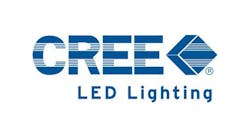Latest from News
Cree, Inc., Durham, N.C., is preparing the way for a planned spin-off of its power products and radio frequency (RF) devices, most recently with a rebranding effort that renamed that division Wolfspeed.
The division, which makes silicon carbide (SiC) power products and gallium nitride (GaN) RF devices, will be spun off into a separate company next year, a move Cree announced in May. The businesses included in Wolfspeed were founded with a mission, “to liberate power and wireless systems from the limitations of silicon,” Cree said in a release.
Wolfspeed will enter the marketplace with 28 years of wide-bandgap semiconductor technology and experience.
Cree said the new name combines elements of Cree’s culture and expertise. Cree was founded at North Carolina State University, home of the Wolfpack, and the name aims to integrate the wolf’s spirit of intelligence, teamwork, endurance and the relentless pursuit of innovation, along with an emphasis on speed, agility and responsiveness.
Rebranding at this point allows the Power and RF division to build brand equity while operating as a separate business.It will continue to leverage Cree’s brand, global footprint, scale and expertise to ensure a smooth transition.
“Today, Wolfspeed is providing our customers and our team with a first look at our new company’s name, brand identity and purpose in advance of our IPO, which we plan to execute during fiscal year 2016,” said Frank Plastina, chief executive officer, Wolfspeed. “We’re building something new on the firm foundation that is Cree,” Plastina added, “and we want to share our vision, plans and enthusiasm with all of our stakeholders as we move seamlessly through the transition.”
Wolfspeed’s offering of a fully commercialized, broad portfolio of field-tested SiC and GaN power and wireless technologies and products are aimed at enabling higher power density, higher switching frequencies and reduced system size and weight. These advantages lead to smaller systems, lower system costs and improved performance, and will ultimately lead to more powerful applications in the transportation, industrial and electronics, energy, and communications markets, Cree said.












